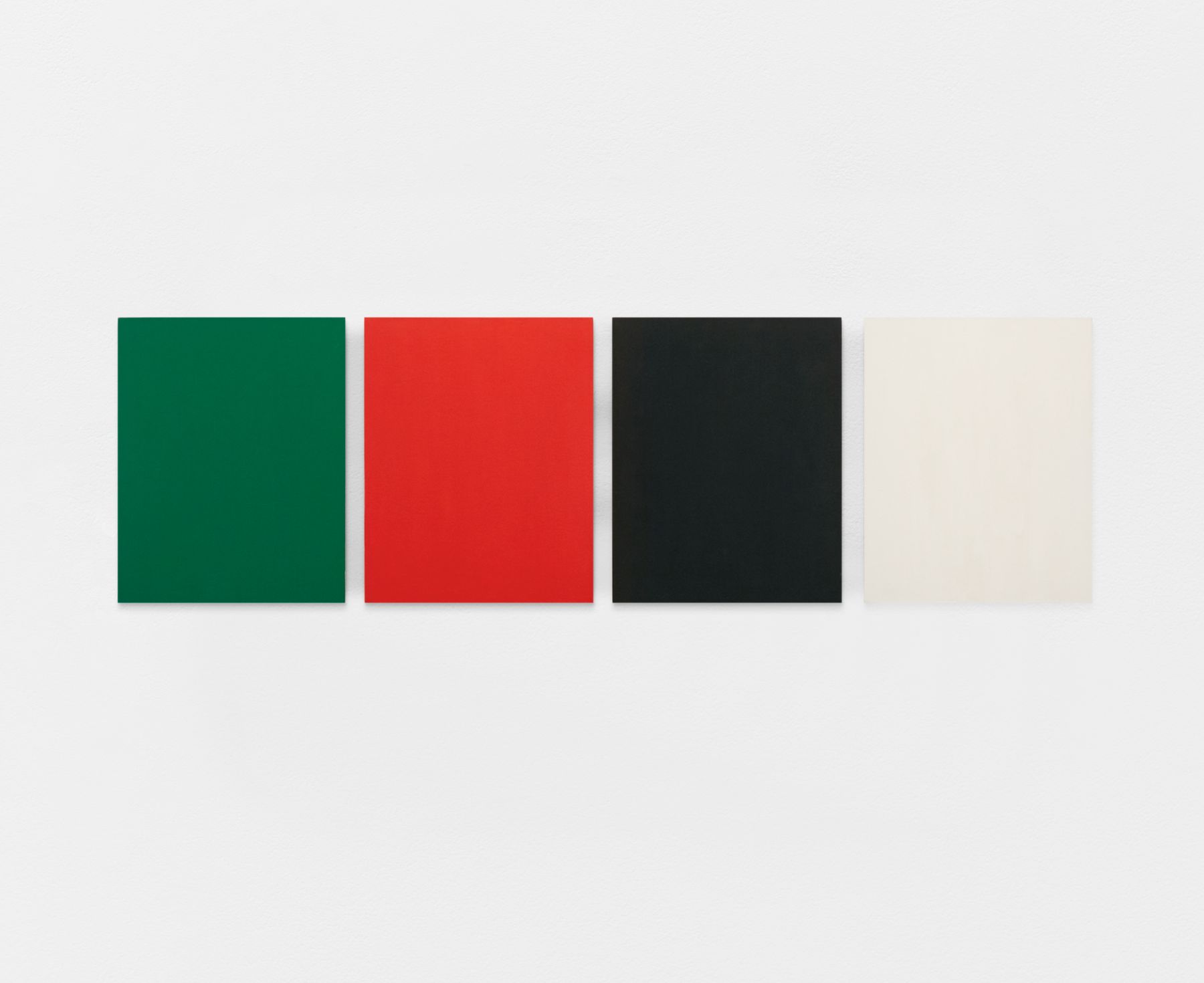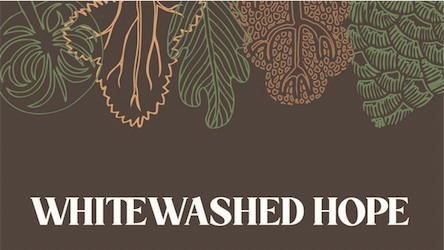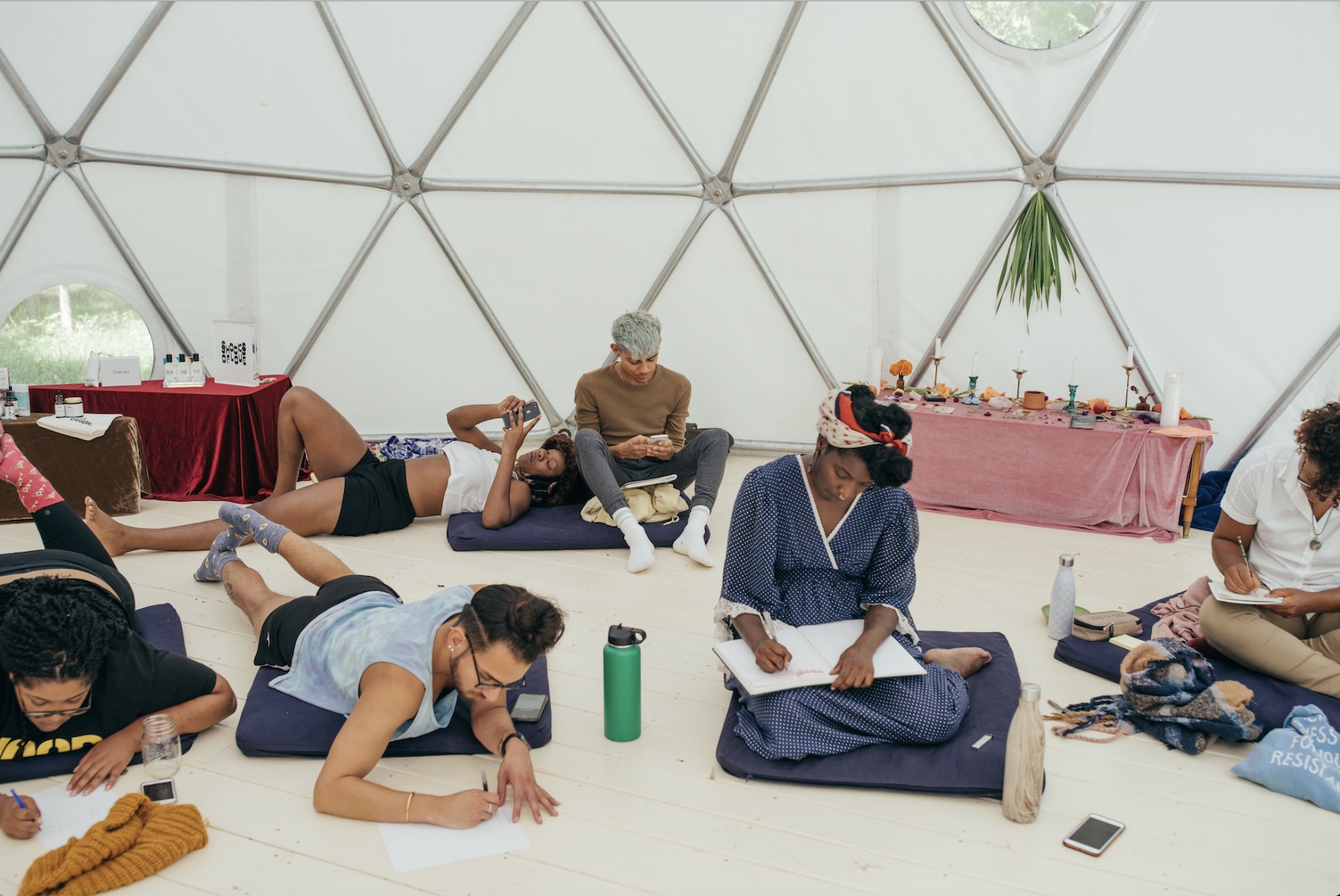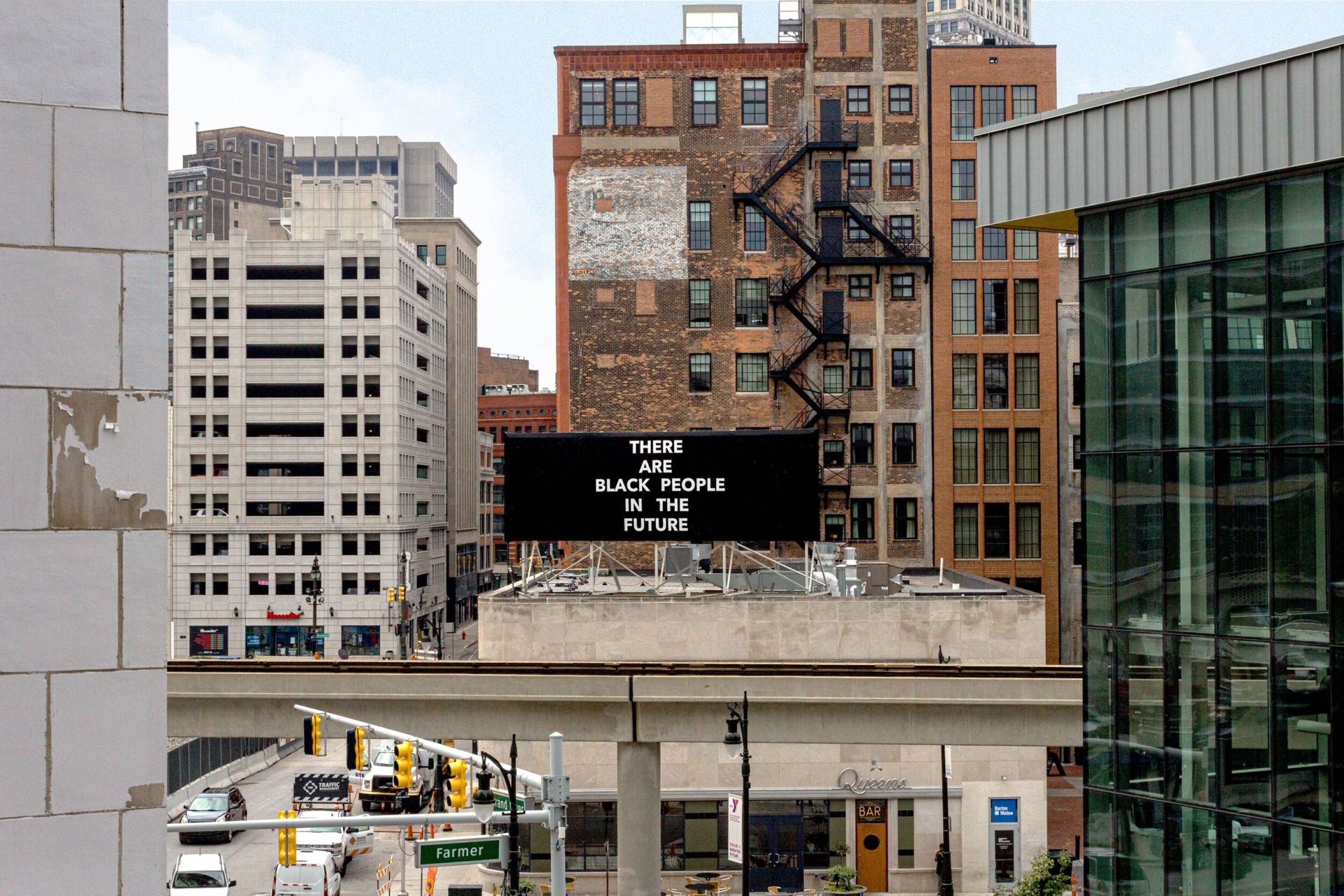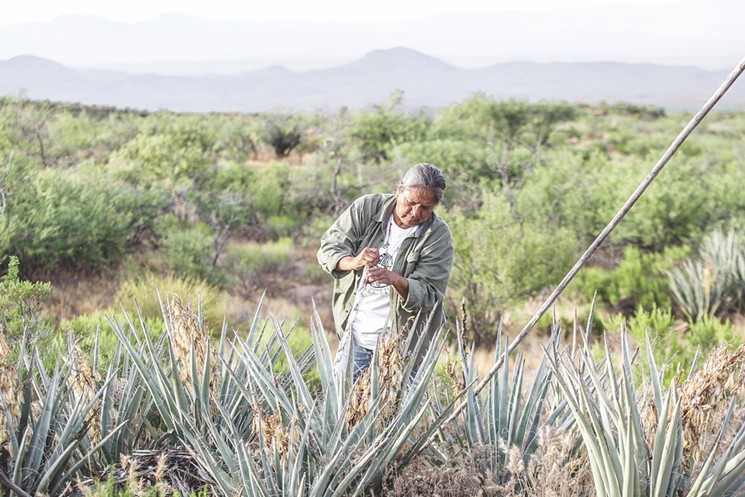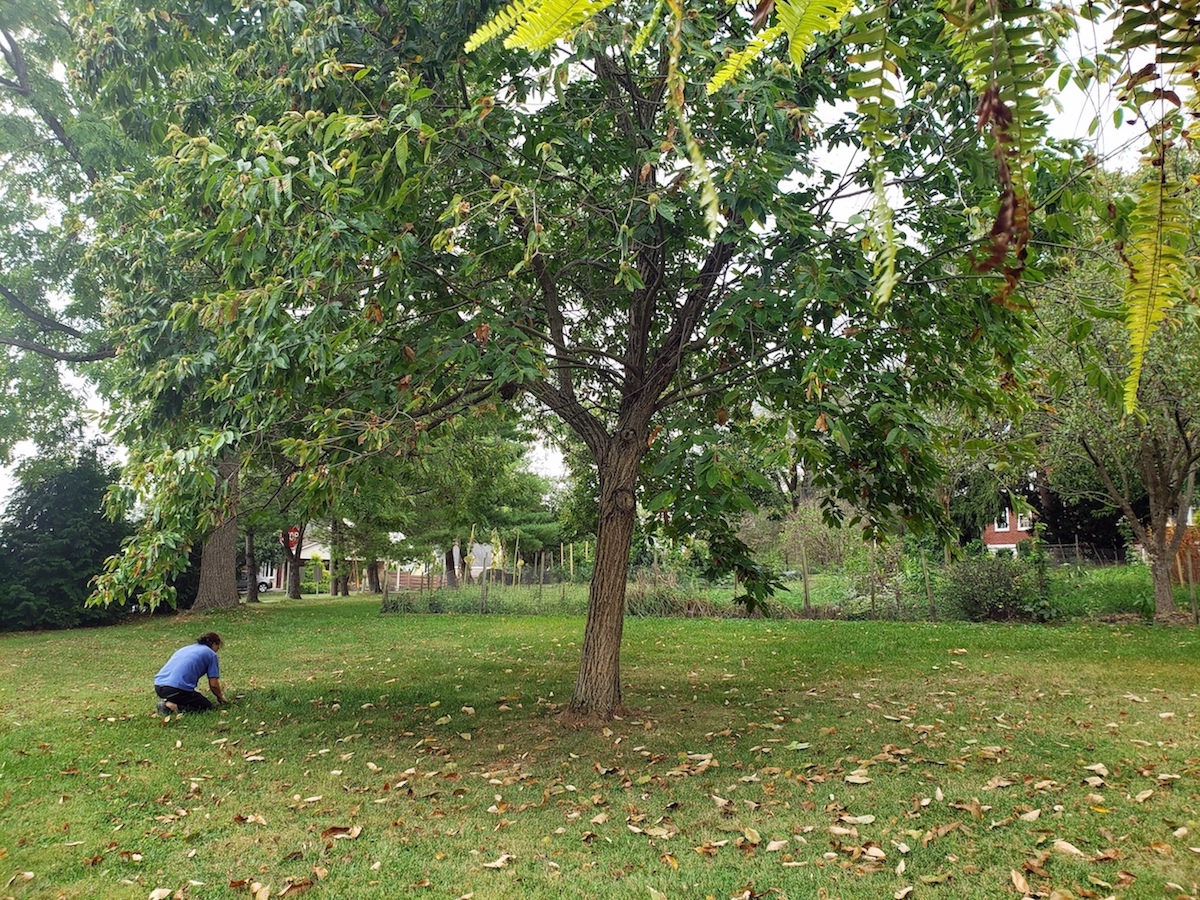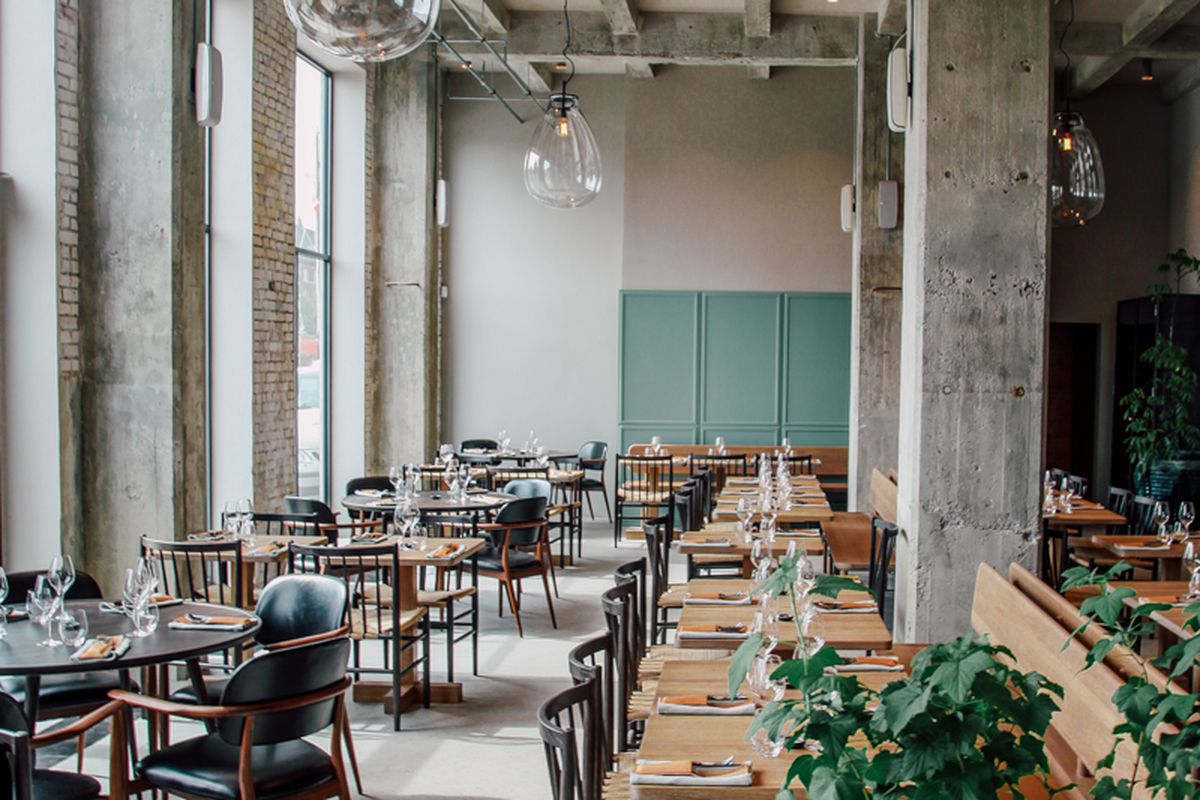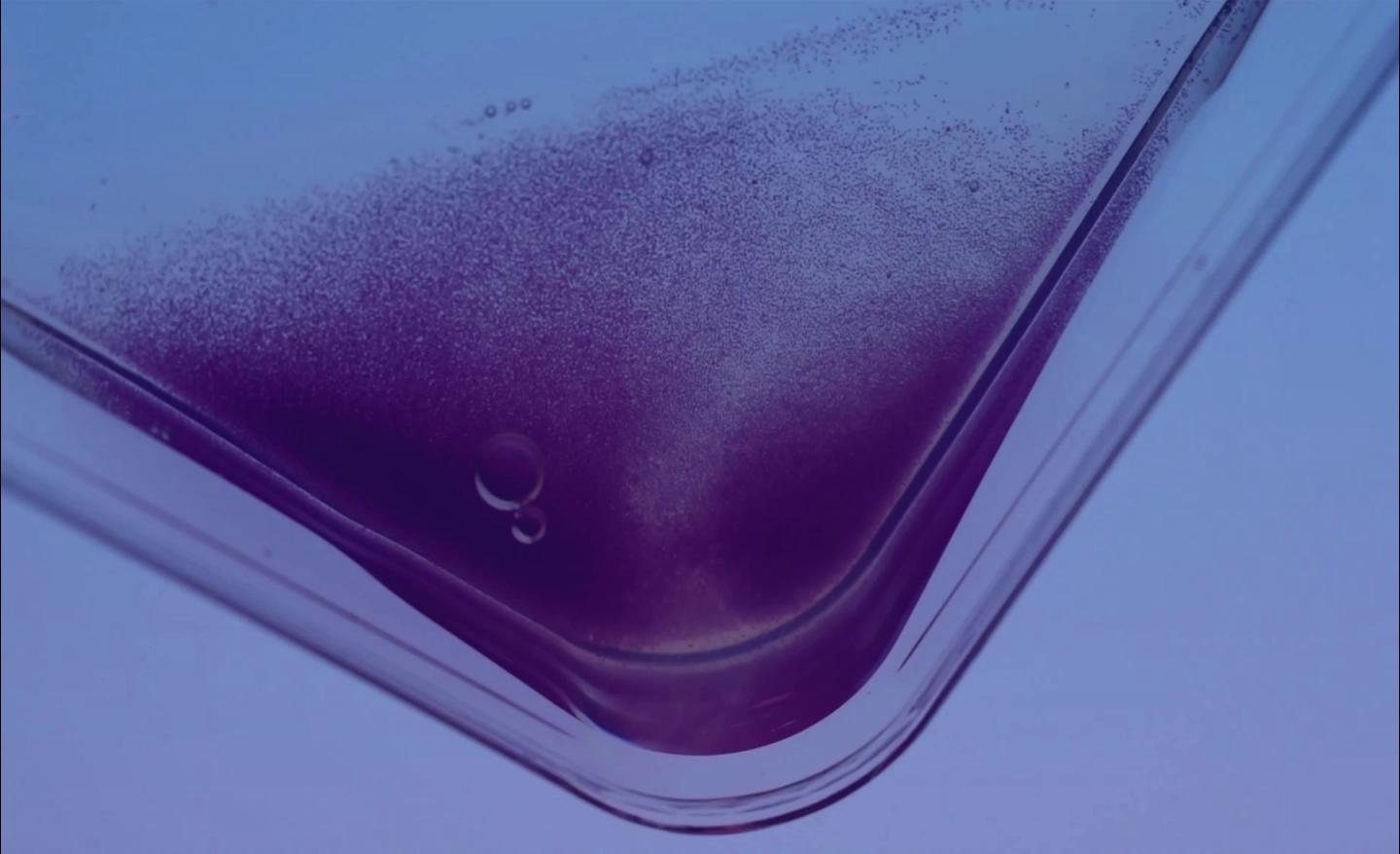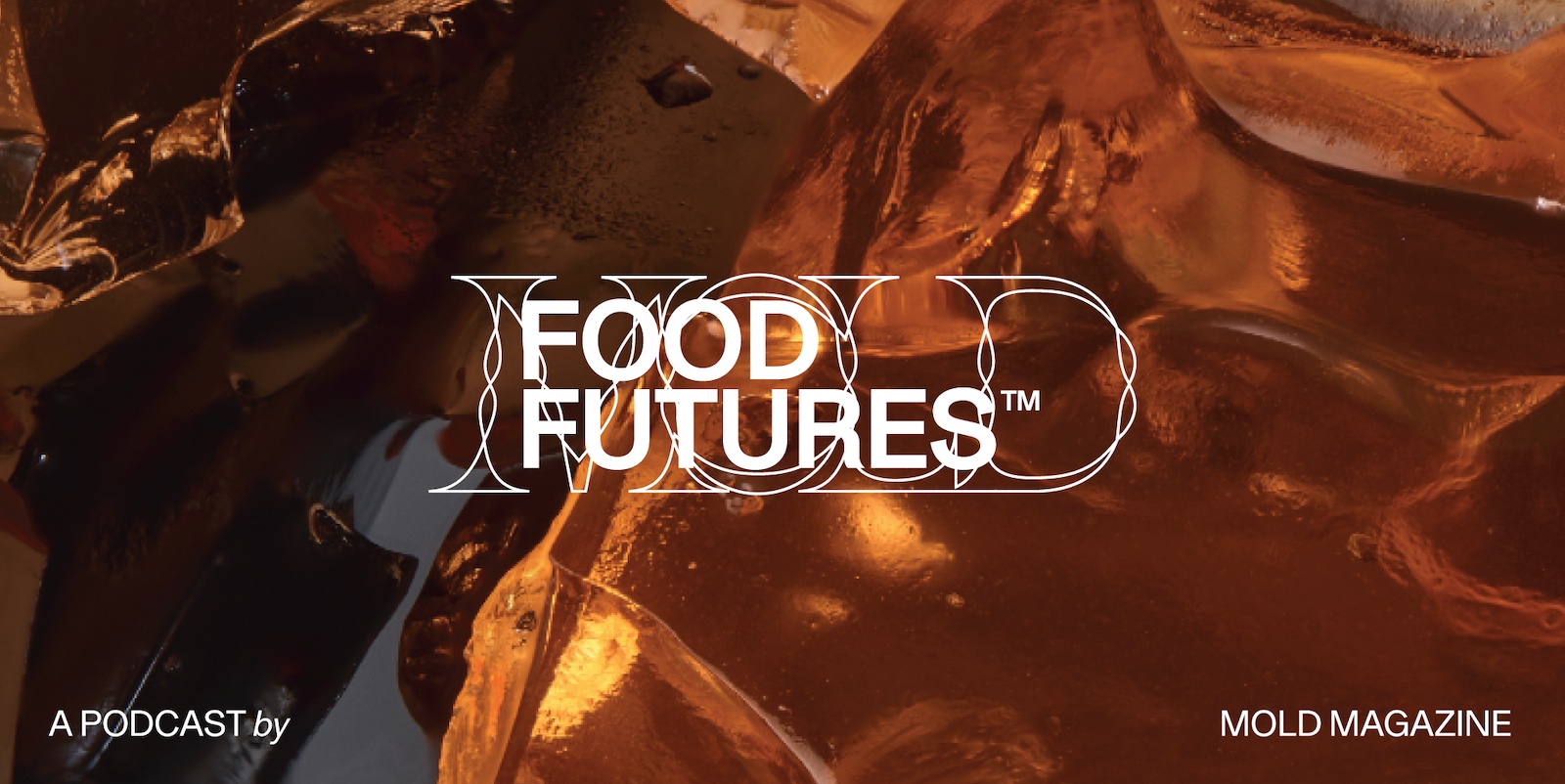At Techfestival 2018, a group of food visionaries, from scientists to chefs coming from cities as diverse as New York and Shanghai to local Danish creatives, gathered at MOLD’s summit on Intimate Food Interfaces. Hosted at Space10, IKEA’s future-living lab located in the heart of Copenhagen’s meatpacking district, the summit explored the sensorial opportunities at the intersection of food and technology, by bringing together a remarkable line-up of speakers including Emilie Baltz, Louise Beck Brønnum (Restaurant Alchemist), Simon Caspersen (Space10), Yasaman Sheri and Lining Yao (Carnegie Mellon).
To cap the day, participants explored the future of food interfaces for Copenhagen in a workshop led by Estefanía Simón-Sasyk using Project Gastronomía’s Food System Game, a guided conversation game where players use prompt cards and a systems map to build narratives that explore the entire supply chain, from producing to consuming.


MOLD’s editors and Techfestival participants play Project Gastronomia’s Food System Game
The game yielded five different Copenhagen 2035 food scenarios, which form the basis of the following provocative articles from Project Gastronomia collaborators. Product designer Kaii Tu created a first-person “day in the life” report set in the Danish capital in 2035, accompanied by speculative designs illustrating artifacts and interactions from the future. Lotte Meeuwissen, a Dutch food designer, penned an opinion piece exploring the relationships and tensions between themes that arose in the future food systems ideated during the Summit.
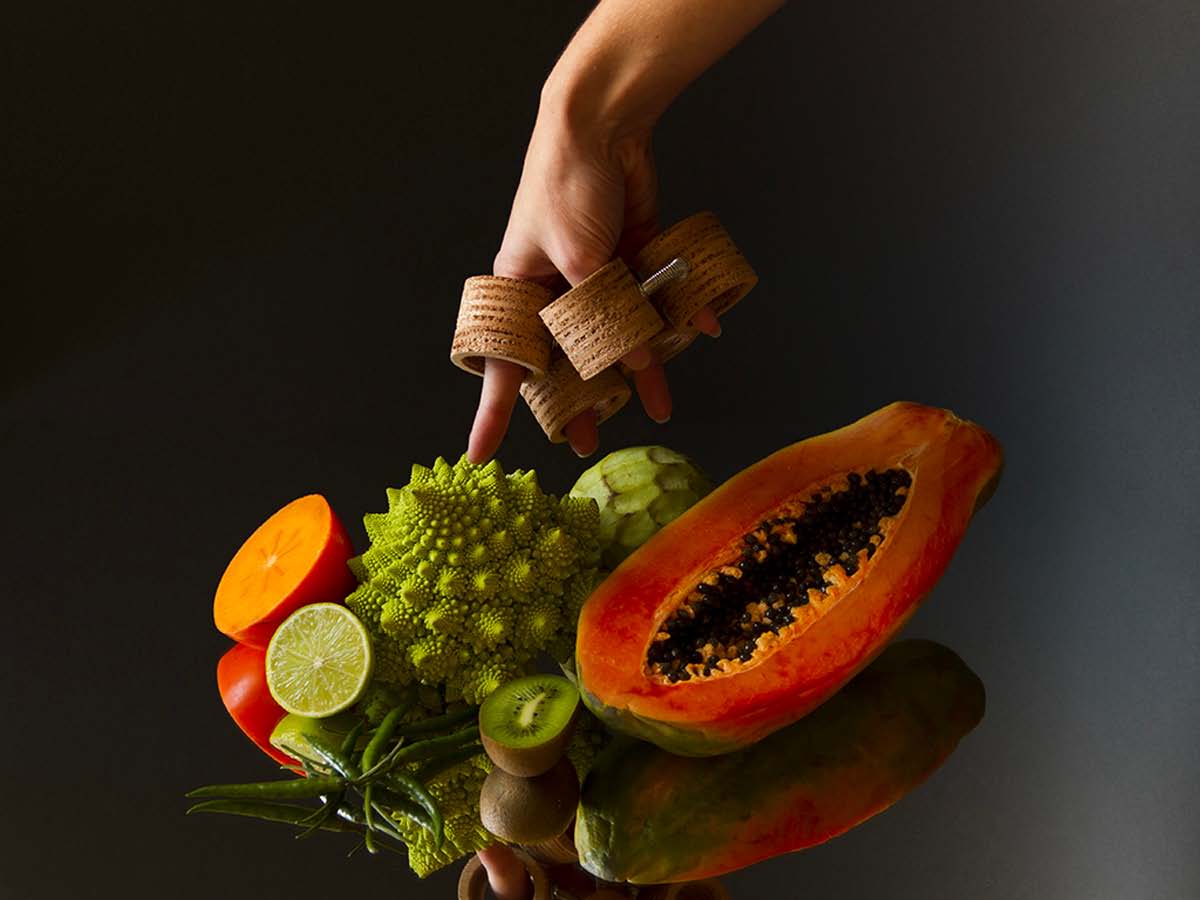 Fingerfood (2017) – An experiment which obliges one to use the receptive fields of solely the fingertips in touch interaction; while changing sensory perception it forms a new bond between food and the human. (Concept: Lotte Meeuwissen / Photography & Art-Direction: Blanca Zaragoza)
Fingerfood (2017) – An experiment which obliges one to use the receptive fields of solely the fingertips in touch interaction; while changing sensory perception it forms a new bond between food and the human. (Concept: Lotte Meeuwissen / Photography & Art-Direction: Blanca Zaragoza)
Copenhagen 2035: A Food System that embodies Trust, Nutrition And the Human: The Love Triangle
By Lotte Meeuwissen
Copenhagen 2035, a society in which people push the future forward with one hand, while with the other hand pull the future back to their hearts. Welcome to the love triangle of trust, nutrition and the human.
After diving into the five future food scenarios, I found myself pulled between the concepts of fast and slow. The participants predicted a food system that walks into a vortex of trust, where all nutritional choices are handed over to Datacracy. At the same time, an opposing force works towards a system that slows down in order to reconnect nutrition to humanity.
The vortex of trust in Datacracy
Intuitively, the people of Copenhagen—or the broader western culture—have a drive to optimize their lives, often encompassed with the need to go faster and faster. We cannot imagine a future without ever more advanced technologies and time-saving devices, partly because we already live in a data-driven civilization that constantly reinforces Datacracy: a world in which we have the opportunity to hand over our personal choices, views and information to algorithms, and use them as fuel to speed up any process. The idea of being able to create more time by accelerating our world excites us: it gives us a sense of power to move from one goal to the next as fast as possible. This reinforces a reward circuit as the more goals we reach, the more meaning we find in our our lives.
The same goes for food. The trend of acceleration is embodied in the way food is grown, produced, processed, consumed and enjoyed nowadays. It can be found in the design of (fast) food places, supermarkets, services, packages, kitchenware, tableware and recipes. Implementing Datacracy in our food systems means that it automates the physicality of our body in order to move faster and more efficiently. The idea of data-driven devices was a well-liked concept explored by the participants: from a mind-reading headset integrated into a wearable that is able to monitor the needs of the body in terms of vitamins and minerals, to algorithms nudging us to diversify our diets for health benefits. This idea of relying on Datacracy to live in a healthy body is dual. On the one hand it helps us understand health from a totally different perspective; it enables us to nurture our body to its needs, or to even shop for feelings by administering specific foods that are engineered to reach that feeling. On the other hand it raises a critical question: will these devices make us win or lose the sense of connection with our own body?
Slowing down for the human
I believe envisioning the future of food always involves a pinch of nostalgia towards life before technology. Human beings have a very intimate relationship with food: since the beginning of consciousness of our own lives and life beyond our own, food has always acted as the primal interface.
The fact our bodies are powered by food makes us vulnerable, yet, it also reminds us of the capability to grow and transform existence with our own hands.
For Copenhagen 2035, the participants also imagined a scenario where food-creation is democratized and citizens can all be food creators: from a system that enables us to grow food without the use of soil to the implementation of precise knowledge to empower us to curate personalized food. These systems proposed to slow down the production process and let the human take an active part in the food chain. It places us closer to the origin of food and encourages us to highly value the organoleptic characteristics and nutritional values in our food. This scenario would enable us to go to a restaurant to enjoy the curated sensory experience of a potato created by that specific chef, or visit the farm next door because their apples taste like nostalgia, ultimately making us aware of the interplay between food and the body, through sensory stimulation.
Nutritional wisdom
At this moment we find ourselves in a rivalrous love triangle where the lover, the nostalgic human, is competing with the rival, the vortex of trust in Datacracy, for the love of the beloved, nutrition wisdom. To be able to evolve this relationship into an open and modern ménage-à-trois, we should start to acknowledge the social nature of nutrition.
At the end of the day nutrition is an act of connectivity, it is a social and meaningful gesture created within a cultural framework that enables us to connect with ourselves as well as with others. The next step in defining our food futures is to use this passionate ménage-à-trois to connect the dots. Maybe the algorithms of the future not only nudge us to diversify our diets but also function as a mechanism to preserve food cultures. Or maybe the democratization of food creation will enable people to grow their own culinary family traditions, in order to protect traditional food knowledge and to keep up with cultural traditions such as Sunday family food gatherings. When empathizing with the social power food has, we not only enable ourselves to physically benefit from innovations in nutrition, but also benefit from the mental well-being brought by being and feeling connected to our food and to other human beings. When we leverage the social nature of our nutrition we will be able to enter the era of nutritional wisdom and rediscover the magic that food brings to our humanity.
Lotte Meeuwissen is a food designer who researches the social interplay between human and food in order to create new culinary interactions.
 Digital Amphora III: Just as amphoras were used to store seeds in Roman times, in 2035 the Digital Amphoras are repositories for seeds, with a twist. They utilize CRISPR gene editing technology to print out seeds from the past, which often contain different nutritional and taste profiles compared to contemporary varieties. Just turn the dial on the left to select your desired plant, turn the dial on the right to select the year, press print, and the Digital Amphora III outputs the seed packet. Design by Kaii Tu
Digital Amphora III: Just as amphoras were used to store seeds in Roman times, in 2035 the Digital Amphoras are repositories for seeds, with a twist. They utilize CRISPR gene editing technology to print out seeds from the past, which often contain different nutritional and taste profiles compared to contemporary varieties. Just turn the dial on the left to select your desired plant, turn the dial on the right to select the year, press print, and the Digital Amphora III outputs the seed packet. Design by Kaii Tu
A Winter Day in Copenhagen, 2035
Written, designed, and illustrated by Kaii Tu
Week 50 / 10.12.2035
05:35 Monday. Start of another work week. Snooze.
05:55 After hitting snooze a second time, I realize I’d better get up, put on my glasses, and get to the office or else Katrine will write up “Lucas is consistently late to work” again in the next performance review. I see my chip implant telling me that I haven’t gotten enough sleep—I kind of already knew that—but it is also reminding me that I’m not getting enough Vitamin D because we get so little sunlight in the winter now. It suggests more eggs—or I could take a weekend in the Canaries.
07:15 On my way out, I pass by our apartment community’s garden in the building lobby. We recently reverted back to having individual plots from the previous communal approach. That’s because when gene-edited seeds became open source, we weren’t sure if we could trust the seeds our neighbors were planting. And anyway, all of our nutritional needs are so individual, so it makes sense to plant just what each of us needs.
A notice board reminds me that we should start planting this month in order to harvest watermelons and cucumbers this summer. Our community just got the new Digital Amphora III, and so we’re now able to go back in time to generate historical seeds. I print out some watermelon seeds from a 1635 variety, which I had been wanting to try—it got some really good reviews last season.
10:12 Time to escape from the work cubicle for a quick caffeine break, and to procrastinate replying to some emails for a few minutes. Browsing the news, I see that Parliament finally passed the Freedom of Nourishment Act after a lot of debate. This means that people now have the right to grow, buy, and eat whatever food they want, without government, medical, or enterprise intervention. So if you wanted to grow and eat only the sweetest variety of apples and buy only candy in the store, that would be up to you. I wonder what kind of health issues will arise now, despite all of the nagging and nudging that our chips are designed to do. After all, they are constantly telling us what food is “proper,” according to our doctors and the Ministry of Health.
12:20 Lunchtime, finally. I synced my chip to the company canteen, so that they can prepare my meal tailored to today’s nutritional needs and flavor cravings, and have it ready by the time my last meeting finishes.
 Dosed food: With ever-greater granularity in the health data that is collected in real time from the implanted chips, consumers and food producers alike will be able to access highly precise information about an individual’s nutritional needs. Eating for practical nourishment becomes separated from eating for experiential enjoyment, but both still have to deliver on taste. Functionally nutritious food can be dosed according one’s exact nutritional requirements, like medicine.
Dosed food: With ever-greater granularity in the health data that is collected in real time from the implanted chips, consumers and food producers alike will be able to access highly precise information about an individual’s nutritional needs. Eating for practical nourishment becomes separated from eating for experiential enjoyment, but both still have to deliver on taste. Functionally nutritious food can be dosed according one’s exact nutritional requirements, like medicine.
15:45 I go to the 7-11 down the street in search of more caffeine and an afternoon snack. That canteen food didn’t quite fill me up. I look around at the shelves, and check out what’s on sale, and of course, what my chip is recommending. The Müesli box seems to be calling my name. Even though Müesli isn’t what I would usually think of as an afternoon snack, and even though the thought of eating a bowl of cold cereal in the dead of winter normally sends a shiver up my spine, that’s what I picked up. The brand really did a good job of getting to know me and speaking to me, I guess. Design by Kaii Tu.
 AR Packaging: Analog interfaces, such as graphics printed on a cardboard box of cereal in the supermarket, come to life through augmented reality. In 2035, we wear glasses through which we can see the real world, but that world is augmented by messages personalized to the wearer. In this case, Lucas sees that this box of Müesli can help him fulfill certain nutritional deficiencies, as monitored in real time by his implanted chip. It also utilizes data in his agenda, to give him advice for the remaining meals of the day.
AR Packaging: Analog interfaces, such as graphics printed on a cardboard box of cereal in the supermarket, come to life through augmented reality. In 2035, we wear glasses through which we can see the real world, but that world is augmented by messages personalized to the wearer. In this case, Lucas sees that this box of Müesli can help him fulfill certain nutritional deficiencies, as monitored in real time by his implanted chip. It also utilizes data in his agenda, to give him advice for the remaining meals of the day.
19:30 I would have rather gone home and straight to bed after work, but I had already made dinner plans to catch up with a friend from university at the restaurant Mona 3.0. And those reservations are so hard to come by.
I’m somewhat of a Mona loyalist: I’d been to Mona 2.0, and even the original Mona back when my parents took me as teenager. But this version really tops the other experiences. Before the mussels course, with our AR kit donned we “wade” through the shallow waters on the beach to pick the very mussels we are about to eat. And while we tuck into the summer berries for dessert, we visit with the farmers who grew them. I’d satisfied all of my basic nutritional needs earlier in the day—this meal is all about seeing a different world through food.
22:53 The dinner, as you could expect, was pretty drawn out. By the time I get into bed, I’m pooped. My chip tells me I’m overdue for bedtime. Thanks Mr. Obvious. Maybe I really should look into that holiday in the Canaries.
Kaii Tu is a product designer whose work blending analytical thinking and craft reaches across boundaries: from furniture and consumer products in market today, to interactive experiences and systems of tomorrow.







